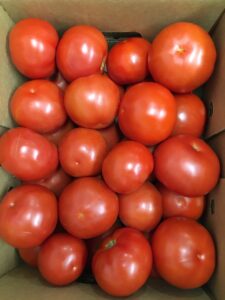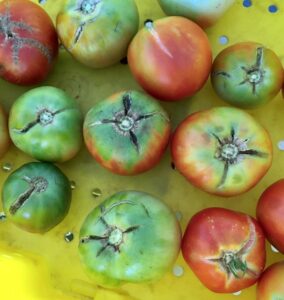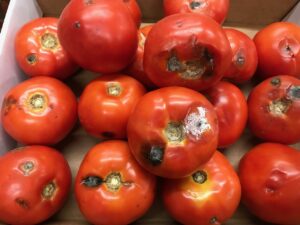Postharvest Produce Guide – Tomato
go.ncsu.edu/readext?919101
en Español / em Português
El inglés es el idioma de control de esta página. En la medida en que haya algún conflicto entre la traducción al inglés y la traducción, el inglés prevalece.
Al hacer clic en el enlace de traducción se activa un servicio de traducción gratuito para convertir la página al español. Al igual que con cualquier traducción por Internet, la conversión no es sensible al contexto y puede que no traduzca el texto en su significado original. NC State Extension no garantiza la exactitud del texto traducido. Por favor, tenga en cuenta que algunas aplicaciones y/o servicios pueden no funcionar como se espera cuando se traducen.
Português
Inglês é o idioma de controle desta página. Na medida que haja algum conflito entre o texto original em Inglês e a tradução, o Inglês prevalece.
Ao clicar no link de tradução, um serviço gratuito de tradução será ativado para converter a página para o Português. Como em qualquer tradução pela internet, a conversão não é sensivel ao contexto e pode não ocorrer a tradução para o significado orginal. O serviço de Extensão da Carolina do Norte (NC State Extension) não garante a exatidão do texto traduzido. Por favor, observe que algumas funções ou serviços podem não funcionar como esperado após a tradução.
English
English is the controlling language of this page. To the extent there is any conflict between the English text and the translation, English controls.
Clicking on the translation link activates a free translation service to convert the page to Spanish. As with any Internet translation, the conversion is not context-sensitive and may not translate the text to its original meaning. NC State Extension does not guarantee the accuracy of the translated text. Please note that some applications and/or services may not function as expected when translated.
Collapse ▲Harvest at the Mature Green 2 stage at a minimum, however many buyers prefer more color so know the buyer’s preference, which is often the breaker or pink stage. Shape should be typical of variety (round, roma, etc.) and well developed; color should be uniform, no green shoulders.
The optimum temperature for tomatoes which ensures best ripening and flavor is 68°F at 90-95% RH with good air circulation. Tomatoes are sensitive to chilling injury at temperatures below 50°F held for longer than a 2 week period, or for a shorter time (6-8 days) at 41°F. Chilling injury is cumulative beginning in the field, and may result in poor color development, uneven ripening, surface pitting, seed browning, and issues with rot.
Quality Specifications
Skin should be smooth, no growth cracks, zippers, sun-scald, or damage from disease, insects, or handling. Fruit should be firm, but not soft.
Common Quality Issues
Growth cracks, green shoulders
Disease, handling injury






